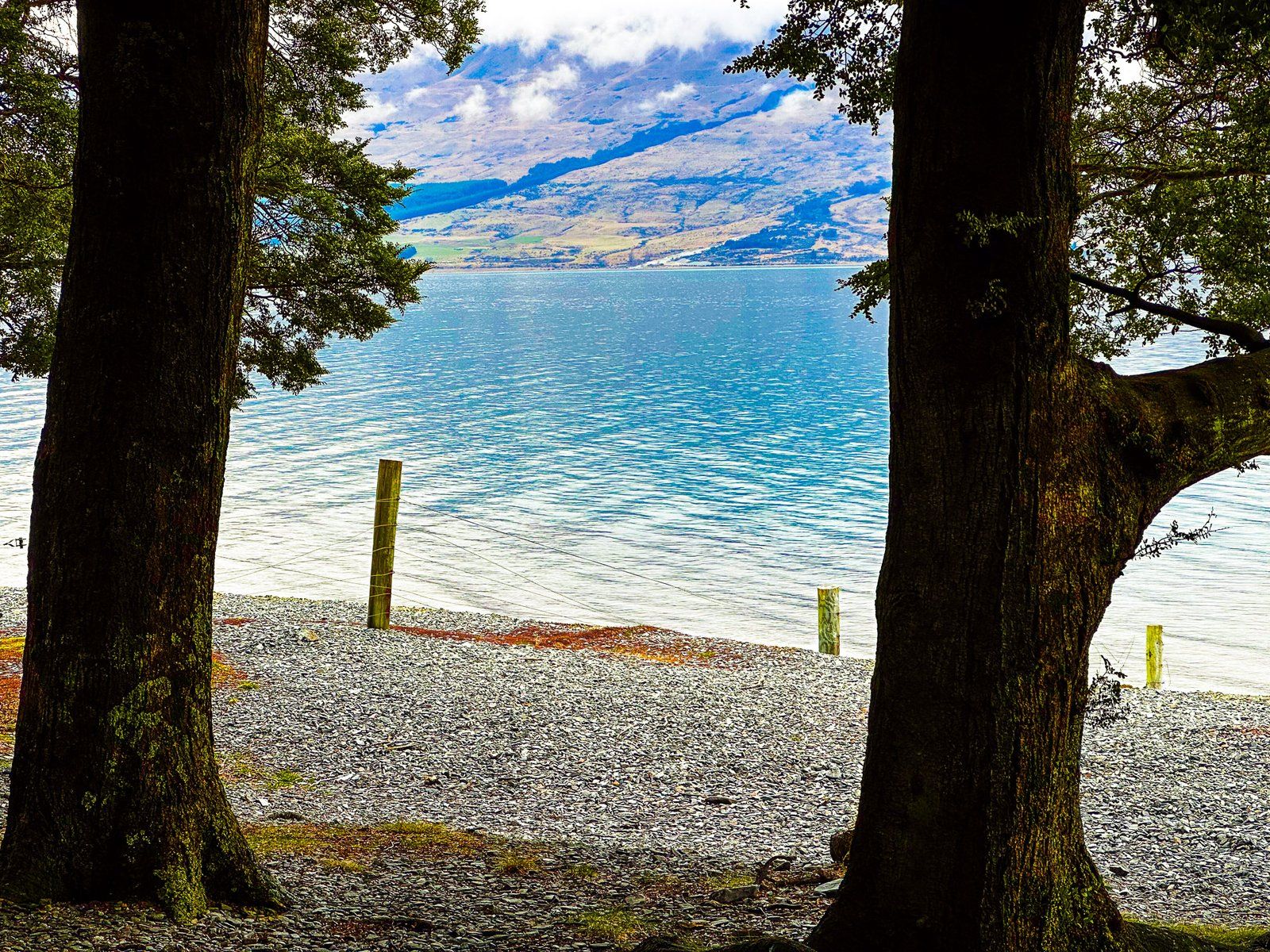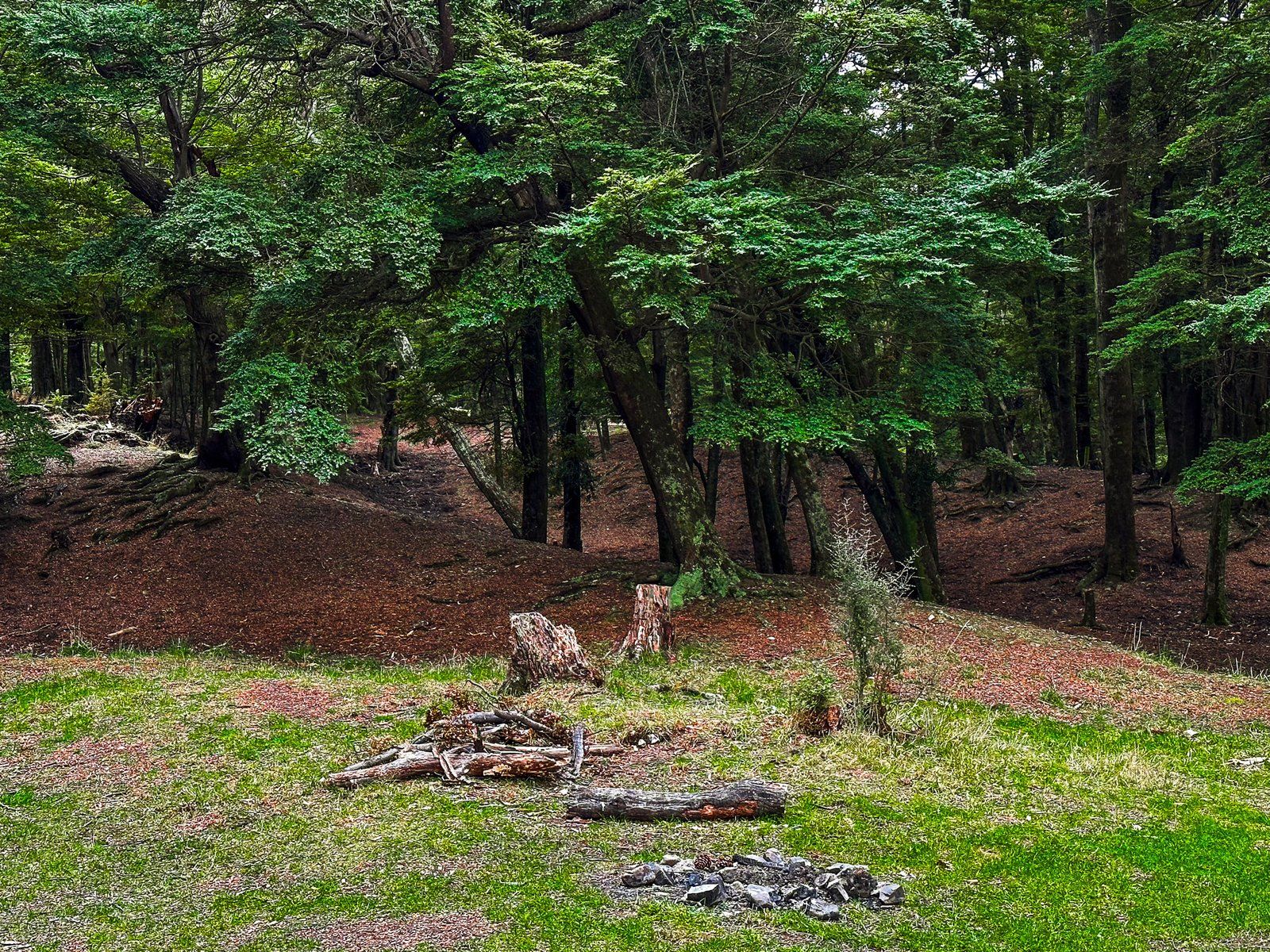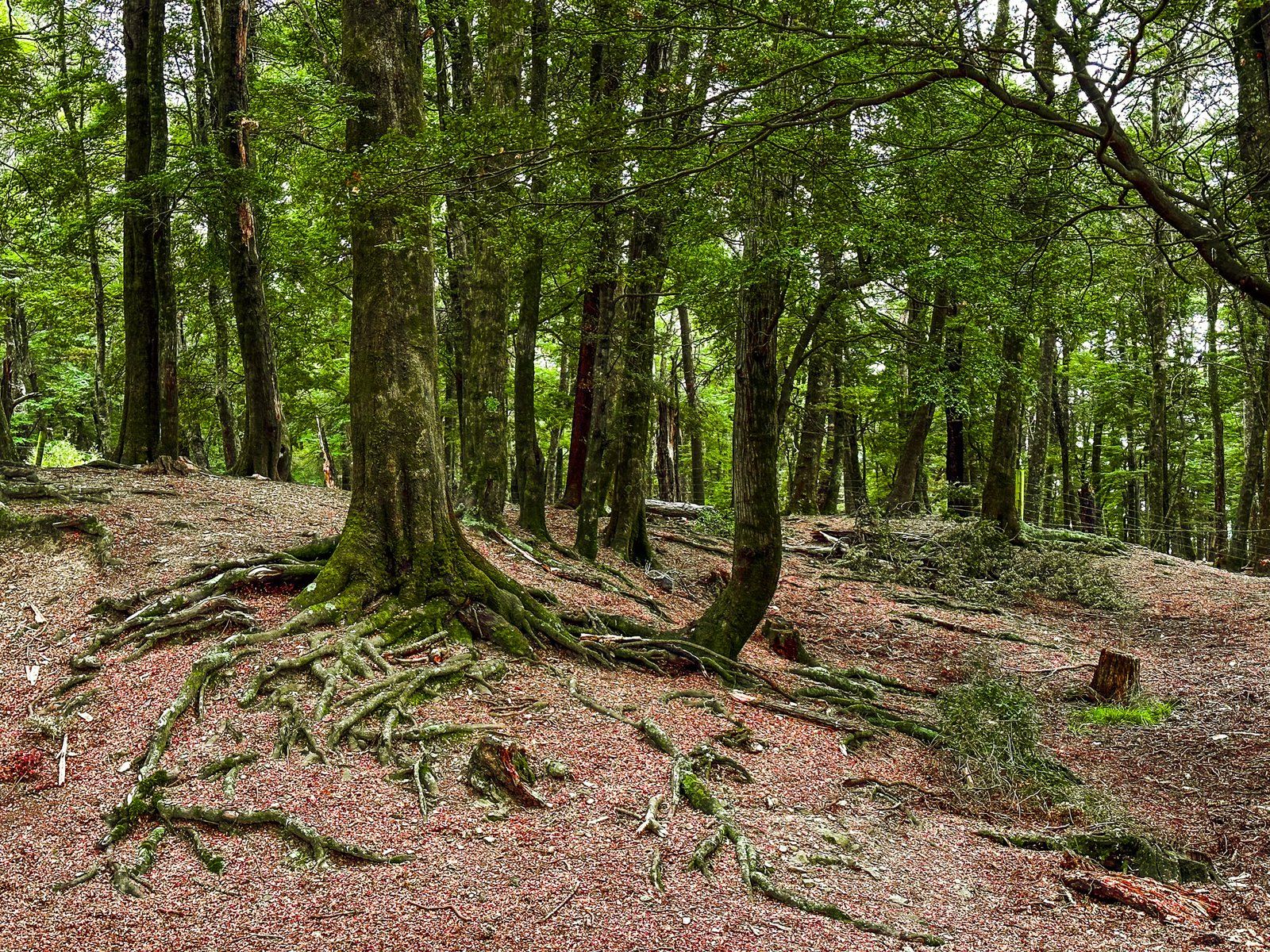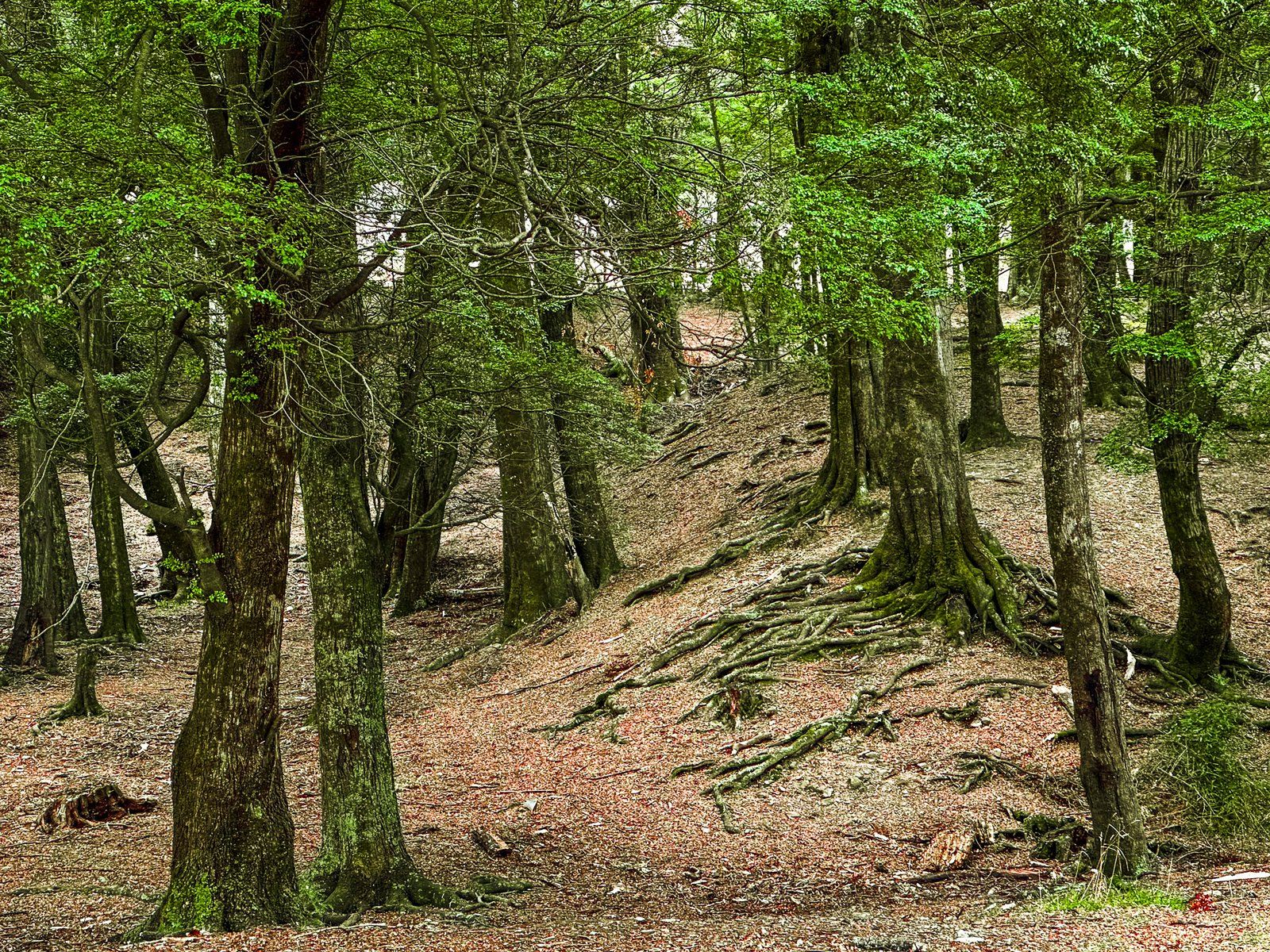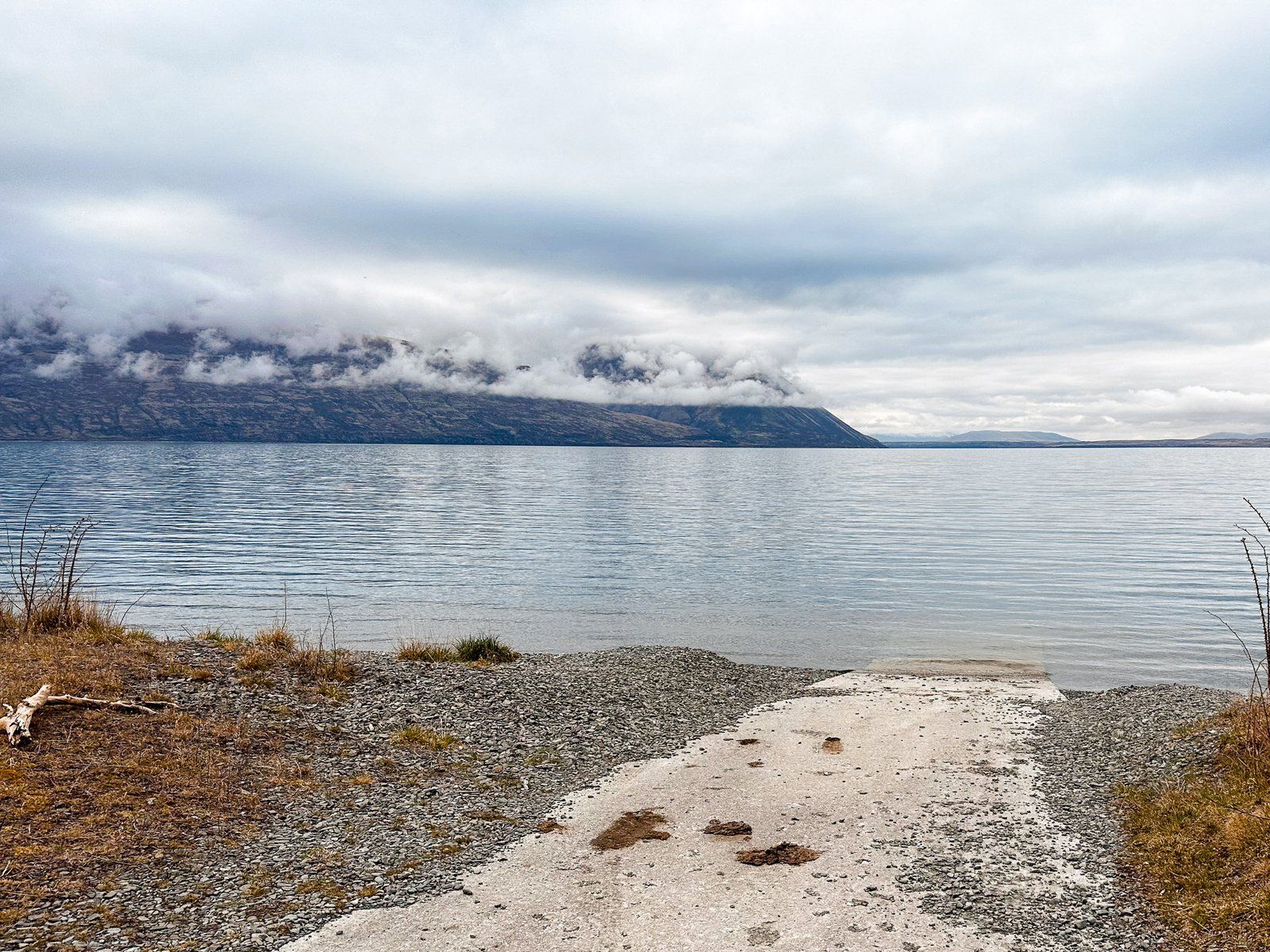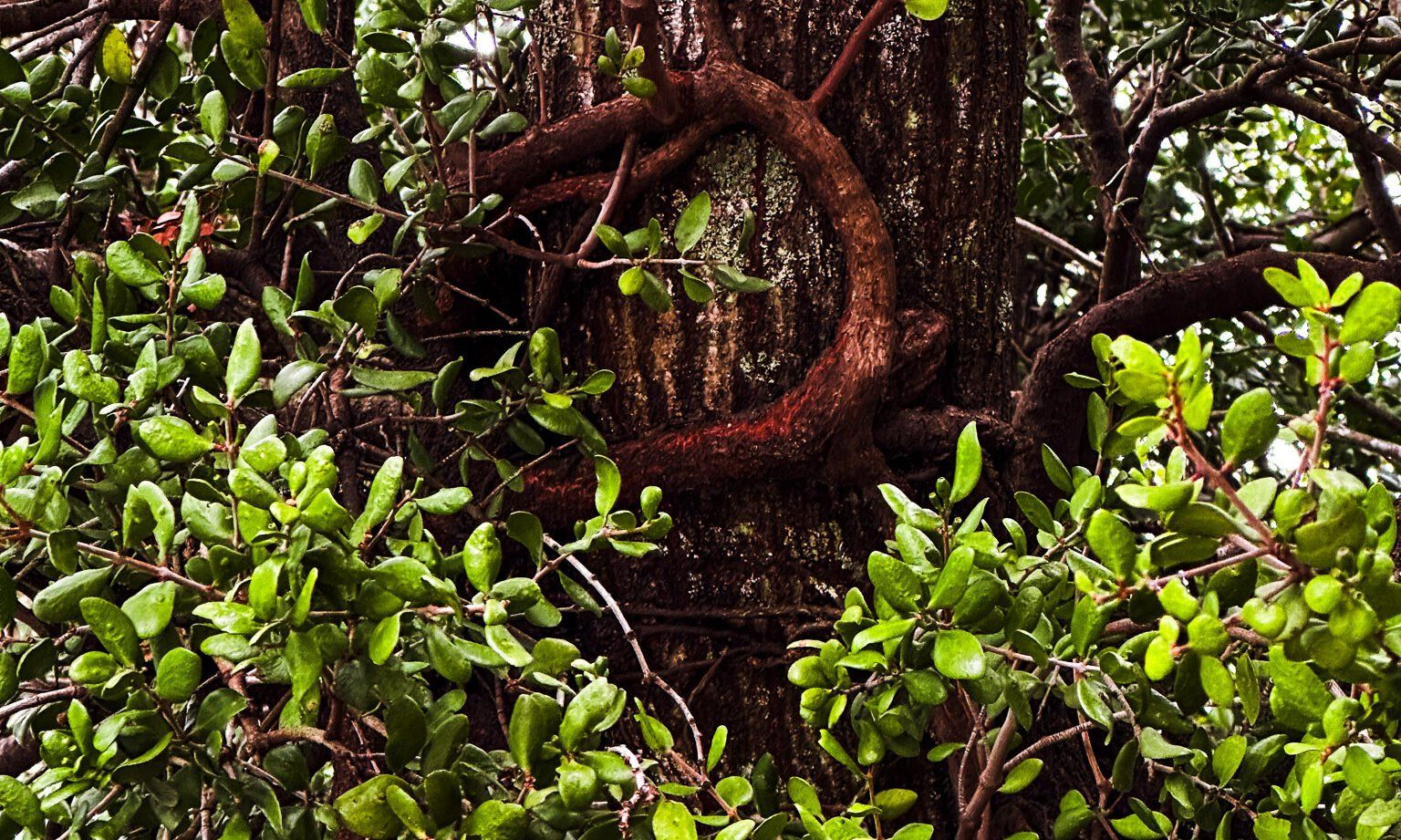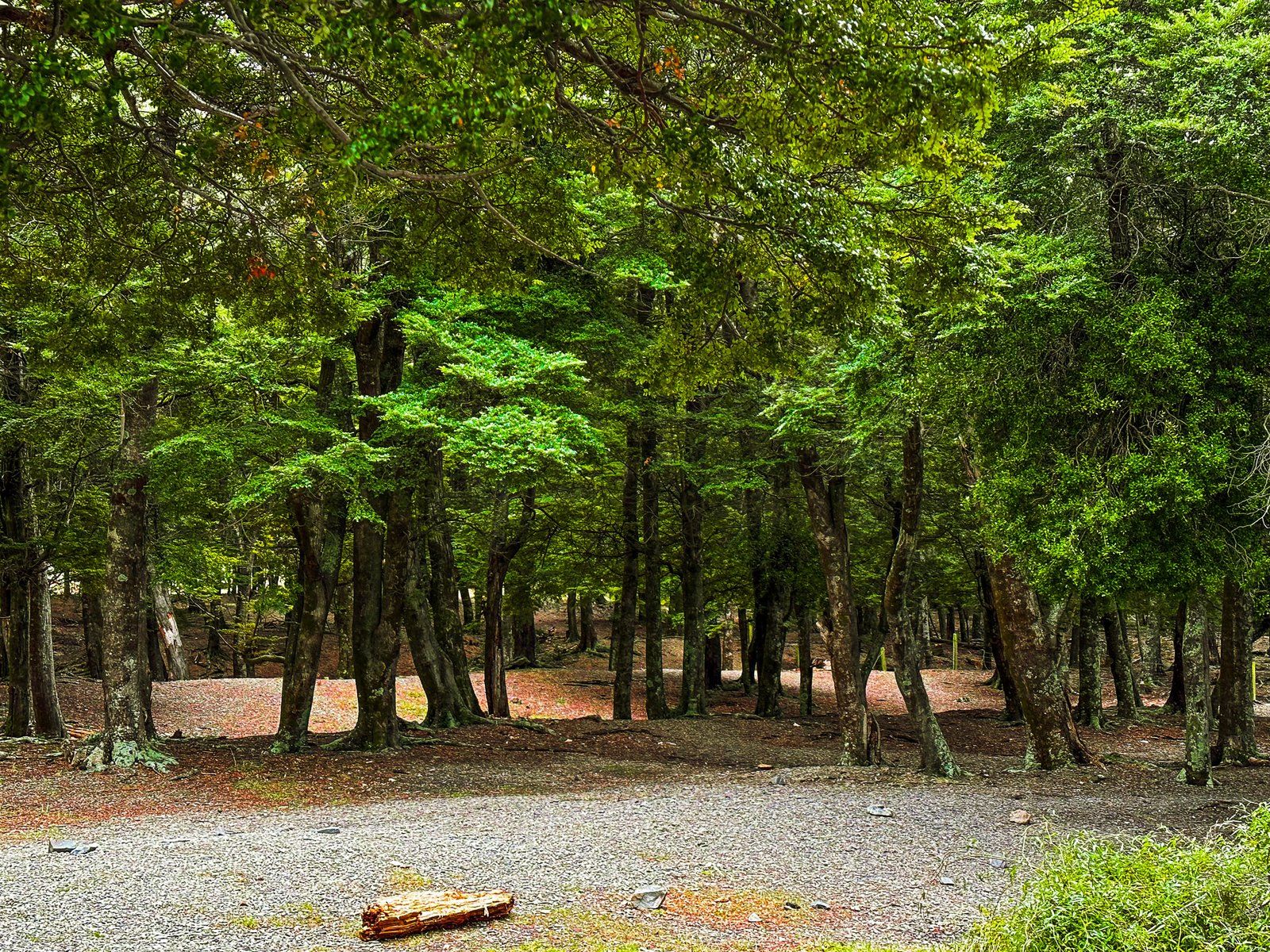A feature of the beech forests around Lake Ōhau and the Hopkins Valley is native mistletoe or pirita in Māori. One of the easiest places to see these now rare plants in abundance is at the DOC Round Bush Campsite. The campsite is three km along Lake Ōhau Road on the shores of the Lake.
As you enter the campsite, an open area is on the lakefront to the right, with the lakeside beech forest to the left. There are some basic camping facilities, and a sign designates the forest as a pirita habitat. In some places, the height of the trees makes pirita tricky to spot, but here, many are at two to three metres. You will see large, well-established shrubs hanging from the trees as soon as you walk into the forest. The best times for flowering are December and January.
There are three types of pirita in the region. These are scarlet mistletoe (Peraxilla colensoi), red mistletoe (Peraxilla tetrapetala) and yellow mistletoe (Alepis flavida). As with other mistletoes, pirita are a parasitic plant that grows on trees. Beech trees are a particularly popular host, and pirita was once widespread in NZ beech forests. Sadly, pirita has been a major victim of browsing by invasive animals, especially possums. But around Lake Ōhau, the Ōhau Conservation Trust has been active and successful in protecting pirita.
